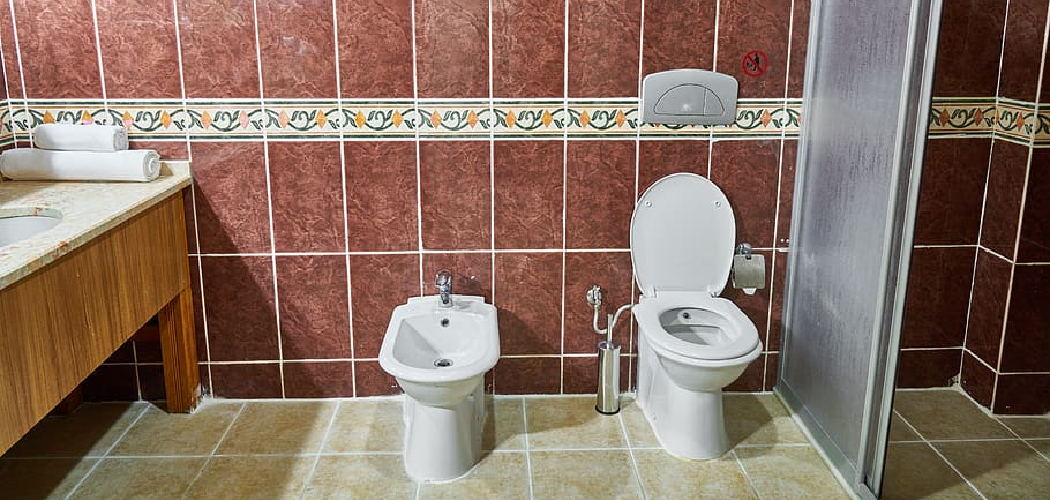Are you looking to give your bathroom a modern and clean look? Look no further than hiding your pipes! Hiding the pipes is now becoming a popular way to tidy up the bathroom, as it can help reduce clutter and improve the overall aesthetic of any room.
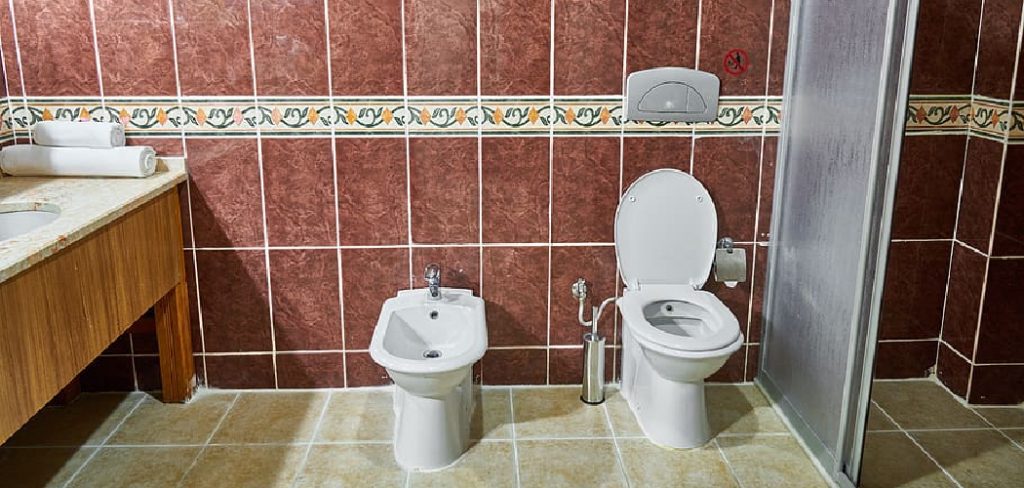
Whether you are trying to hide water lines, drainage pipes, or even venting systems in bathrooms, this tutorial will guide you through each way of concealing different pipe types while still allowing for their functionality. So keep reading if you want to learn how to hide pipes in bathroom from view without compromising on interior space or functionality!
9 Best Ways on How to Hide Pipes in Bathroom
1. Conceal With Wall Covering:
One of the simplest and most effective ways to hide pipes is to cover them with a wall covering such as drywall, paneling, or tongue-and-groove boards. This way you can easily conceal the pipes while still having access to them when needed. This will also help blend in the pipes with your bathroom’s walls, giving it a sleek and modern look.
2. Cover With Wallpaper:
Wallpaper is another great way to hide unsightly pipes in bathrooms. It provides a wide variety of options for color and pattern that can match any aesthetic- from traditional to contemporary. Not only will wallpaper make the pipes less visible, but it can add some extra flair to your bathroom. Covering up your pipes with wallpaper is a great way to make them blend in and create a more cohesive look.
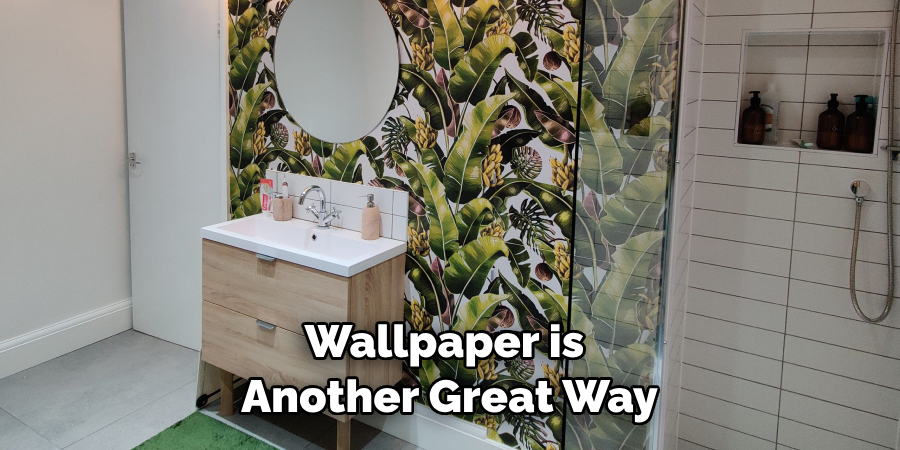
3. Install Built-in Cabinets:
Built-in cabinets are another great option for concealing the pipes in bathrooms. This will help keep the bathroom organized while hiding any unsightly plumbing behind closed doors or shelves. Installing cabinets can also add some extra storage space to the bathroom, which is always a plus.
4. Use Shelving:
Shelving units are another way to conceal pipes in bathrooms while also adding some extra storage. You can find many stylish and modern designs that can fit any aesthetic, and they are also easy to install. Shelves are great for storing towels or other items while also hiding the pipes from view.
5. Install a Pedestal Sink:
If you want to truly hide your pipes, consider installing a pedestal sink. This type of sink is great for bathrooms with limited space since it does not require any plumbing or walls for installation.
Additionally, pedestal sinks provide an elegant and timeless look to any bathroom. While installing a pedestal sink will not hide the pipes, it will still provide an updated and polished look.
6. Use a Ceiling Mounted System:
A ceiling-mounted system is perfect for bathrooms with low ceilings, as it will help free up extra space while also concealing the pipes from view. This system consists of multiple pipes that are connected together and then hung from the ceiling, creating an organized and efficient way to hide your plumbing.
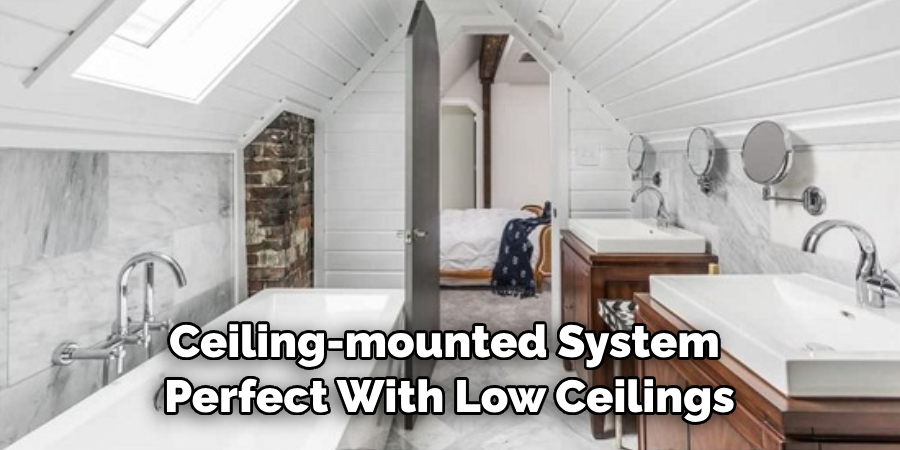
7. Install a Toilet Tank Cover:
If you have an exposed toilet tank, consider installing a toilet tank cover to help conceal it from view. This is a great way to hide the plumbing and give your bathroom a more polished look. Plus, many modern designs come with additional storage space for keeping items such as towels or extra toilet paper out of sight.
8. Cover the Pipes With Decorative Trim:
Decorative trim is a great way to make unsightly pipes less visible while adding some character to your bathroom. You can find many different types of trim that will match any aesthetic, and it is also easy to install. Not only will decorative trim hide the pipes from view, but it can also add a nice touch of style to your bathroom.
9. Use Pipe Covers and Clamps:
Pipe covers and clamps are a great way to hide exposed pipes while still allowing them to function properly. They are easy to install and will provide an extra layer of protection from any potential leaks or damage caused by the pipes. Plus, they come in a variety of colors and designs to match any bathroom theme.
With these tips, you’ll be able to hide pipes in the bathroom with ease! All it takes is some creativity and careful planning to make sure each solution fits your space and aesthetic.
Whether you choose to install cabinets or use decorative trim, the options are endless when it comes to making your bathroom look tidy and modern. So get creative with hiding those pipes, and enjoy the upgraded look!
Additional Tips and Tricks to Hide Pipes in the Bathroom
- Use a shower rod and curtains to conceal the pipes behind them. This will also help with soundproofing your bathroom.
- Install tiles around the pipes for an easy, stylish solution that camouflages the pipe even more.
- Paint or wallpaper over exposed pipes, matching the color scheme of the room. This can be used as an accent wall or to cover a section of the room.
- Install decorative molding around the pipes and paint them to match the rest of the room. This will help draw attention away from the pipe while also adding character and detail to your bathroom.
- Hang artwork around exposed pipes, such as photographs or mirrors, so that they detract from the look of the pipes.
- Get creative and use baskets, shelves, or other decor pieces to hide a pipe. This way you can add additional storage and decor in your bathroom, while also hiding the pipe.
- If possible, consider relocating the pipe to another part of the wall or ceiling where it won’t be as visible.
These tips and tricks will help you successfully hide the pipes in your bathroom while also making it look stylish! With a little bit of creativity, you can transform your bathroom into a place of beauty without having to worry about those pesky pipes.
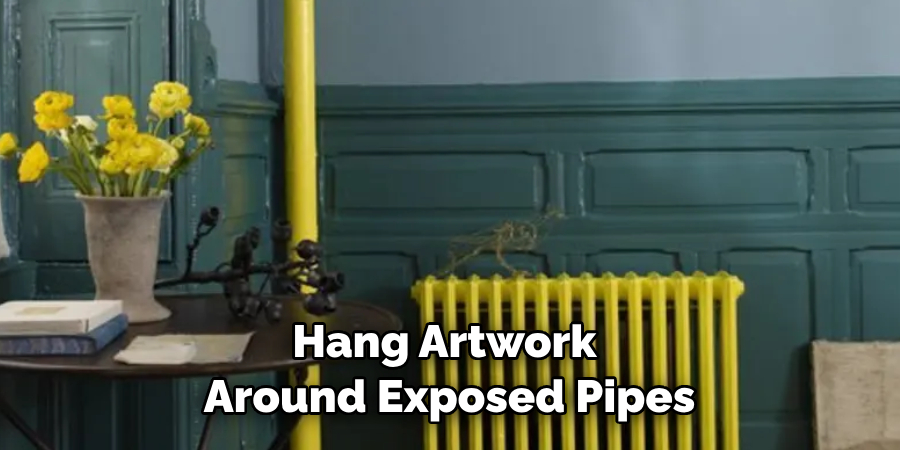
Things You Should Consider to Hide Pipes in Bathroom
- Measure the pipes to determine their sizes and lengths. It is important to know exactly how long the pipes are so that you can plan around them when hiding them.
- Choose materials that will work for your project. Since most bathrooms have high humidity levels, it is important to choose materials that can stand up to moisture such as MDF wood, PVC, and plasterboard.
- Pick a hiding spot for the pipes. If you have enough space, you can easily hide them behind walls or in cabinets. But if space is limited, consider building false walls or panels to cover up the pipes.
- Install insulation materials on the exposed pipes. It will not only help reduce noise but also make them less visible.
- Paint the pipes to match the color of the walls or flooring in your bathroom. This will help create a more cohesive look and hide any remaining evidence of the pipes.
- Finally, seal up the joints with caulk or silicone sealant to ensure that everything stays put and no leaks occur from these areas.
By taking the time to properly hide your pipes in the bathroom, you can add a more aesthetically pleasing look to your space and improve the functionality of it as well. With the right materials and attention to detail, you can easily transform your bathroom into a serene oasis that everyone will love!
Frequently Asked Questions
What Are Some Common Methods Used to Hide Pipes in a Bathroom?
Some popular ways of hiding pipes in bathrooms include using decorative boxes, wall panels, and freestanding furniture. Additionally, creative solutions like adding a false wall or building shelves around the pipe can be effective. Other options include painting pipes to blend in with the wall color and concealing them behind a shower curtain or wall art.
What Are Some Benefits of Hiding Pipes in a Bathroom?
Hiding pipes in the bathroom can help improve its overall aesthetic. It can make the space feel more open and organized, as well as reduce visual clutter. Additionally, covering up pipes can help improve sanitation and hygiene, as well as reduce the risk of a plumbing issue by making it easier to spot any potential issues.
Are There Any Risks Associated With Hiding Pipes?
When covering pipes, be sure to leave enough space for maintenance access. If you conceal them too much, it could make repairs or inspections difficult and lead to additional costs.
Additionally, be sure to use materials that won’t damage the pipes or create an unsafe environment when in contact with water. Always check local regulations regarding pipe concealment before starting any project.
How Can I Make Sure the Hidden Pipes Are Still Accessible?
When hiding pipes, it’s important to leave enough space around them for maintenance access. For example, if you’re using wall panels or decorative boxes, make sure to leave enough room behind them for pipes and fittings.
If using shelves, be sure they can be easily removed when needed. Additionally, always check the manufacturer’s instructions before covering any pipe to ensure proper installation.
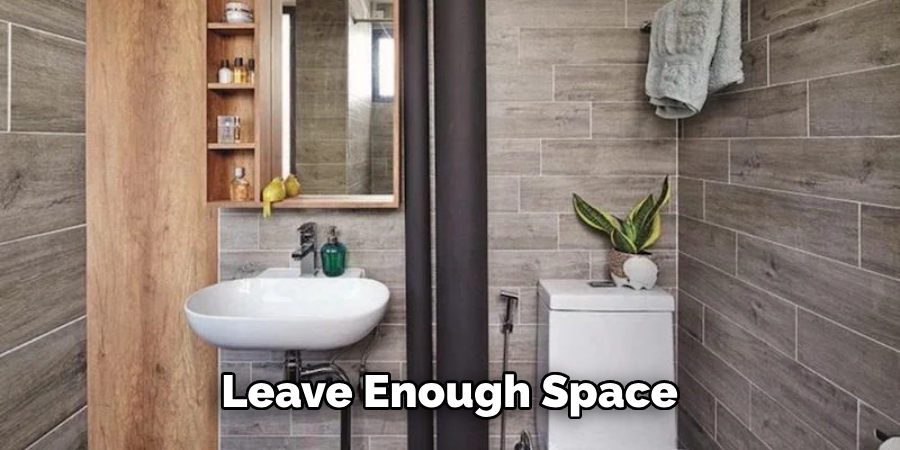
Conclusion
With all of the creative ideas for ways how to hide pipes in bathroom, no matter how simple or complex the project feels, there’s a solution that anyone can try. From painting and accessorizing to creating custom frames and art installations, when it comes to hiding bathroom pipes, you have more options than you think.
Whether you’re looking to upgrade your existing vanity setup or redesign your entire bathroom from top to bottom, taking the time to hide your bathroom pipes can be a great way to help make the space look beautiful.
Take the time to research some effective methods for hiding pipes and create a stunning bathroom that looks like it was professionally designed – and if things don’t work out quite as planned, just remember that you always have a DIY plumber on hand! Good luck with finding solutions on how to hide pipes in your bathroom!

